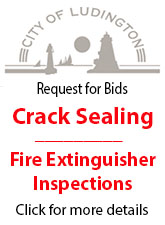
Christian Cook
By CHRISTIAN COOK
mcp columnist
Q. It’s been a mild winter so far but in years past I have dealt with major ice cycles coming from my roof. I’ve considered replacing my roof with a steel roof to fix it. Should I take advantage of this mild winter and have my roof done before we get a big snow?
A. No, you should not replace your roof because of icing. You may need a roof, but bad shingles do not cause icing problems. I will address the differences in roofing materials along with their pros and cons in another article. For now, I’ll explain Icing and how to avoid it.
Although it’s true that the water comes into the house through the roofing the problem is generally not caused by the roofing material at all. It is generally an insulation and venting issue. It’s been my experience that most home owners don’t understand insulation and venting. What makes it worse is there are many contractors who don’t understand them either.

Roofing, insulation and venting all work together as a system. The roofing materials primary job is to shed rain water. That is, water which is flowing down hill. Shingles were never designed to repel water that is standing. Standing water is caused by ice building up on the eve of a roof and forming a dam.
Here’s how it works. When we heat our homes, eventually a certain amount of heat rises above the drywall and insulation, enters into the attic and warms the roof. That heat melts snow. The more snow on the roof the more melt. That melted snow trickles down the warm roof until it gets to the unheated eve where the it re-freezes. This frozen water begins to create a larger and larger dam until it’s soon several inches high and you have a genuine puddle of water on top of your roof.
As I previously explained, shingles were only designed to shed water which is running downhill, not standing in a pool. Really, aside from a solid rubber roof, no roofing material including steel, composites etc are designed to hold standing water. They all have fasteners and seams which will leak.
The solution? If it’s winter and you have a leak, step 1 is to remove snow from the roof. Snow actually creates some insulation from the frigid air temperatures and accelerates the melting at the shingle level. I recommend using a snow rake purchased from your local hardware store.
Reach up as high as you can with the rake and pull down everything you can. I don’t recommend walking on an icy roof without proper safety precautions. Step 2 is break up the ice dam on your eve. We generally do this from a ladder, with an axe. Of course you’ll need safety glassed because ice chips will fly and you’ll need to be careful not to chop into your actual roofing! They also make salt pellets for breaking ice dams and I have use products like Peladow to assist as well. If you can get some of the big stuff off, get some salt up there and maybe a little help from the sun, it should clear up.
The overall solution comes in two parts. First, insulate your attic well. I use 12 inches as a minimum. “Rolled in” insulation as well as “blown in” have R values on the packaging and we like to get your total R-value up over 45. Once your attic has a good covering of insulation, a couple of other real trouble makers are bathroom fans that blow into the attic and attic access doors. Mike Roberson, owner of Pioneer Home Inspections says those un-insulated attic access doors are probably the common culprit he sees during inspections. Simply put, a bare piece of drywall or a wooden door is like a chimney of heat escaping your home.

The second part to building a better attic is the venting. Eventually, some amount of heat is going to get into your attic. We call this “above the envelope.” The envelope is the insulated perimeter of your home. Once heat is above the envelope it’s lost. All it can do up there is cause trouble like melt snow in the winter and soften your shingles in the summer. The best thing to do is vent your attic so it can release that hot air quickly. Here is a graphic I borrowed from Mike which demonstrates that pretty well.
In modern construction we use vents in your soffit, baffles to make sure the air can get around the insulation and another vent on the ridge of your roof to allow this unwanted hot air to escape. Imagine a straw. If both ends are open, warm air will naturally rise, in fact, low pressure created by wind at the top of your roof will actually help it draw. If you pinch off the straw at the bottom or at the top and the system stops. Without proper venting, you’re still going to have ice.
In addition to helping in the winter, proper insulation and venting will also keep you much cooler in the summer. Attics absorb a lot of heat from the sun. On a 90 degree day an unvented attic can easily reach 180 degrees. This means without good insulation and attic venting the ceiling of a room you are trying to cool down to 70 degrees could be at 190 degrees causing your AC to work extra hard. Beefed up insulation and a fast escape route for that heat can save you lots of money and sweat in the summer.
In conclusion, your roof is a system. Winter ice is caused by a break down in insulation and venting. The good news is that it doesn’t always require an expensive repair bill to correct the problem. Sometimes it’s as simple as another layer of insulation and if you are already getting your roof replaced, venting will be a standard option. In older homes it can be a bit more challenging but an improvement can almost always be made.
Christian is the owner of www.CottageRenovators.com. To ask him a question, you may send him an email at: christian@cottagerenovators.com










































.png)




















